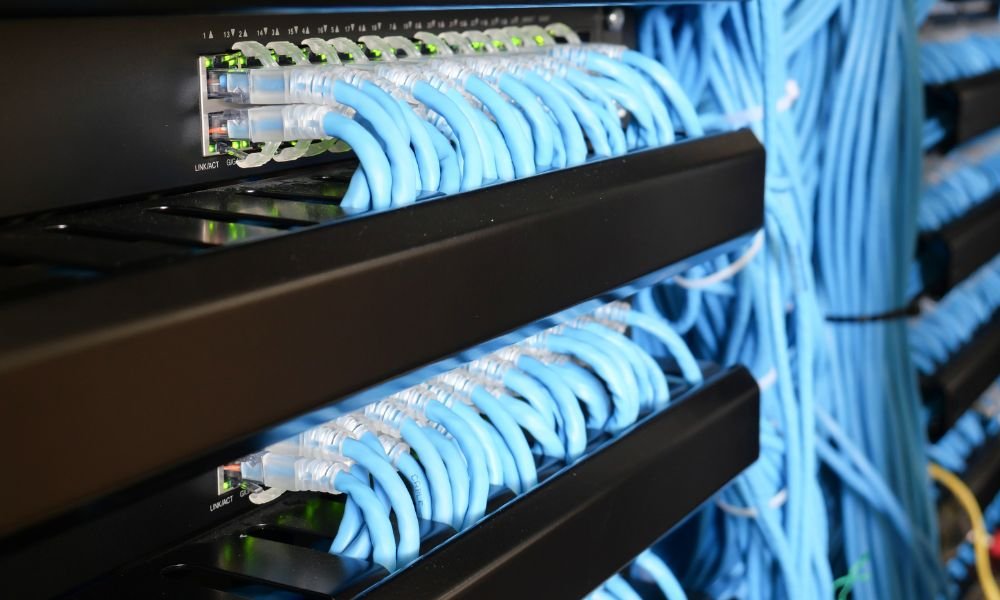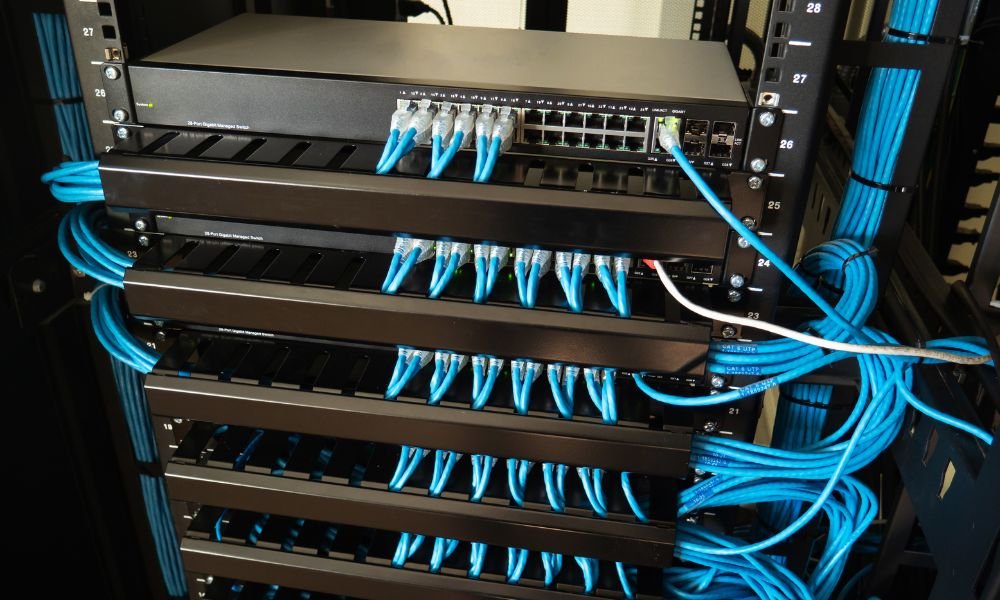The world of cable networks is not one-size-fits-all. Different types of cable networks offer unique advantages and are tailored for specific purposes. Whether it’s the robustness of fiber optics, the versatility of Ethernet, or the familiarity of coaxial cables, choosing the right cable network type can significantly impact your experience in terms of speed, reliability, and functionality.
By the end of this guide, readers will have a comprehensive understanding of cable networks, empowering them to make informed decisions when selecting and utilizing the right cable network type for their unique needs, whether at home or in a business setting. Join us on this journey through the world of cable networks and unlock the potential of seamless communication and connectivity.

Understanding Cable Networks
To truly appreciate the significance of cable networks, we must delve into what they are, their vital role in modern communication, and their relevance across residential and business settings.
What Are Cable Networks?
- Defining Cable Networks:
- Cable networks encompass a sophisticated system of cables and connections designed for transmitting data, information, and signals over a physical medium.
- These networks form the core infrastructure that underpins our digital age, facilitating the exchange of data, voice, and multimedia content.
Importance of Cable Networks
Cable networks are not just a technological marvel; they are the lifeblood of contemporary communication and connectivity. Here’s why they matter:
- Vital in the Digital World:
- Cable networks are the arteries of the digital world, enabling the rapid exchange of data and information that drives our daily lives.
- They facilitate internet access, television broadcasting, phone services, and more, making them indispensable in an increasingly digital society.
- Residential and Business Relevance:
- In residential settings, cable networks bring high-speed internet, cable television, and home phone services into our homes, transforming the way we access entertainment and information.
- In the business world, these networks power everything from local area networks (LANs) to complex data centers, allowing organizations to operate efficiently and communicate seamlessly.
As we navigate this interconnected world, understanding cable networks and their multifaceted role is essential. They are the conduits through which we experience the digital era, and their diverse types and applications shape the quality and reliability of our connectivity. In the sections that follow, we will explore the different types of cable networks and the specific advantages they offer, empowering readers to make informed decisions in an increasingly connected world.

Types of Cable Networks
In this section, we’ll delve into the fascinating world of cable networks, exploring their diverse types, components, applications, and the advantages and limitations they bring to modern connectivity.
Coaxial Cable Networks
Structure and Components of Coaxial Cables:
Coaxial cables are a marvel of engineering, designed with precision to ensure efficient data transmission. These cables consist of several crucial components:
-
- Central Conductor: At its core, coaxial cables feature a central conductor, often made of copper or aluminum. This conductor carries electrical signals, serving as the highway for data transmission.
- Insulating Layer: Surrounding the central conductor is an insulating layer, which plays a vital role in preventing signal interference. It acts as a barrier, ensuring that the electrical signals stay on course.
- Shielding: To guard against electromagnetic interference (EMI), coaxial cables employ shielding. This metallic layer, typically made of braided copper or aluminum foil, wraps around the insulating layer. It acts as a protective shield, keeping unwanted external signals at bay.
- Outer Jacket: The outermost layer, known as the jacket, provides both physical protection and additional insulation. It safeguards the delicate inner components from environmental factors, making coaxial cables suitable for both indoor and outdoor use.
Use Cases for Coaxial Cable Networks:
Coaxial cables have a rich history and continue to be instrumental in various applications:
-
- Cable Television: Coaxial cables revolutionized the way we receive television signals. They are the backbone of cable television distribution, delivering a multitude of channels to our homes with clarity.
- Broadband Internet: In the digital age, coaxial cables have found a new purpose in broadband internet delivery. They bring high-speed internet connections to homes and businesses, connecting us to the vast world of online information and services.

Advantages and Limitations of Coaxial Cable Networks:
Coaxial cable networks offer several advantages, but they also come with limitations:
-
-
- Advantages:
- Durability: Coaxial cables are known for their durability, making them suitable for harsh environmental conditions.
- Resistance to Interference: The shielding in coaxial cables provides excellent protection against electromagnetic interference, ensuring reliable signal transmission.
- Long-Distance Data Transmission: Coaxial cables are capable of transmitting data over long distances without significant signal loss, making them suitable for connecting homes and businesses to the digital world.
- Limitations:
- Bandwidth Constraints: Coaxial cables have bandwidth limitations compared to technologies like fiber optics, which can impact data speeds, especially for high-definition video and high-speed internet.
- Signal Degradation: Over extended distances, coaxial cables may experience signal degradation, affecting the quality of transmitted data.
- Advantages:
-
Coaxial cable networks have played a pivotal role in shaping our modern world, enabling us to enjoy cable television and high-speed internet. While they offer durability and resistance to interference, they also have inherent limitations that prompt the exploration of alternative cable network technologies.

Ethernet Cable Networks
Ethernet cables are the unsung heroes of modern connectivity, offering a diverse range of categories, each tailored for specific needs. In this section, we will explore these Ethernet cable categories, their ideal use cases, and the remarkable advantages they bring to the world of networking.
Explore Various Ethernet Cable Categories:
Ethernet cables come in various categories, and each category offers distinct performance capabilities:
- Cat5e (Category 5e): Cat5e cables are the workhorses of Ethernet networks. They provide reliable performance and are suitable for most Ethernet applications. These cables are commonly used in homes and small offices.
- Cat6 (Category 6): Cat6 cables take performance a step further. They offer enhanced data transfer rates and improved shielding. This makes them ideal for applications that require higher bandwidth, such as businesses and homes with demanding network needs.
- Cat7 (Category 7): Cat7 cables are the cream of the crop when it comes to Ethernet performance. They deliver even higher data transfer rates and offer superior shielding against interference. Cat7 cables are the top choice for applications that demand top-tier performance and reliability.

When to Use Ethernet Cable Networks:
Ethernet cables shine in specific scenarios, making them the preferred choice for many networking needs:
- Local Area Networks (LANs): Ethernet cables are the backbone of LANs, connecting devices within a defined area like a home, office, or data center. Their low latency ensures seamless communication between devices, making them ideal for file sharing, gaming, and collaborative work.
- High-Speed Internet Connections: When it comes to high-speed internet, Ethernet cables are unbeatable. Whether you’re a passionate online gamer, a 4K video streamer, or a professional needing fast data transfer, Ethernet ensures a stable and fast connection. It’s the go-to choice for high-speed broadband connections.
Advantages and Performance Characteristics of Ethernet Cable Networks:
Ethernet cables offer a multitude of advantages and performance characteristics that set them apart:
- High Data Transfer Rates: Ethernet cables provide exceptional data transfer rates, allowing for rapid communication between devices on the network. This translates to quick downloads, smooth streaming, and low-latency online experiences.
- Low Latency: Ethernet’s minimal latency (delay) is crucial for real-time applications like online gaming, video conferencing, and VoIP calls. The low latency ensures that data packets reach their destination swiftly, reducing lag.
- Compatibility: Ethernet cables are incredibly versatile and compatible with a wide range of devices. Whether it’s connecting computers, routers, switches, smart TVs, gaming consoles, or IoT devices, Ethernet seamlessly integrates into your network.
- Reliability: Ethernet is known for its reliability. Unlike wireless connections that can be affected by interference or signal degradation, Ethernet offers a stable and consistent connection, crucial for businesses and demanding users.
- Security: Ethernet connections are generally more secure than wireless alternatives because they are harder to intercept. This is especially important for sensitive data transmission in businesses and organizations.

Ethernet cable networks are the backbone of modern networking, providing exceptional speed, low latency, reliability, and security. Whether you’re building a LAN at home or ensuring high-speed internet for your business, Ethernet cables offer the robust connectivity you need to stay connected and productive.
In conclusion, cable networks are the lifelines of modern connectivity. By selecting the right type of cable network and understanding its capabilities, you can ensure a seamless and efficient connection for your home or business. Make informed choices to harness the full potential of these networks and stay connected in today’s digital world.

